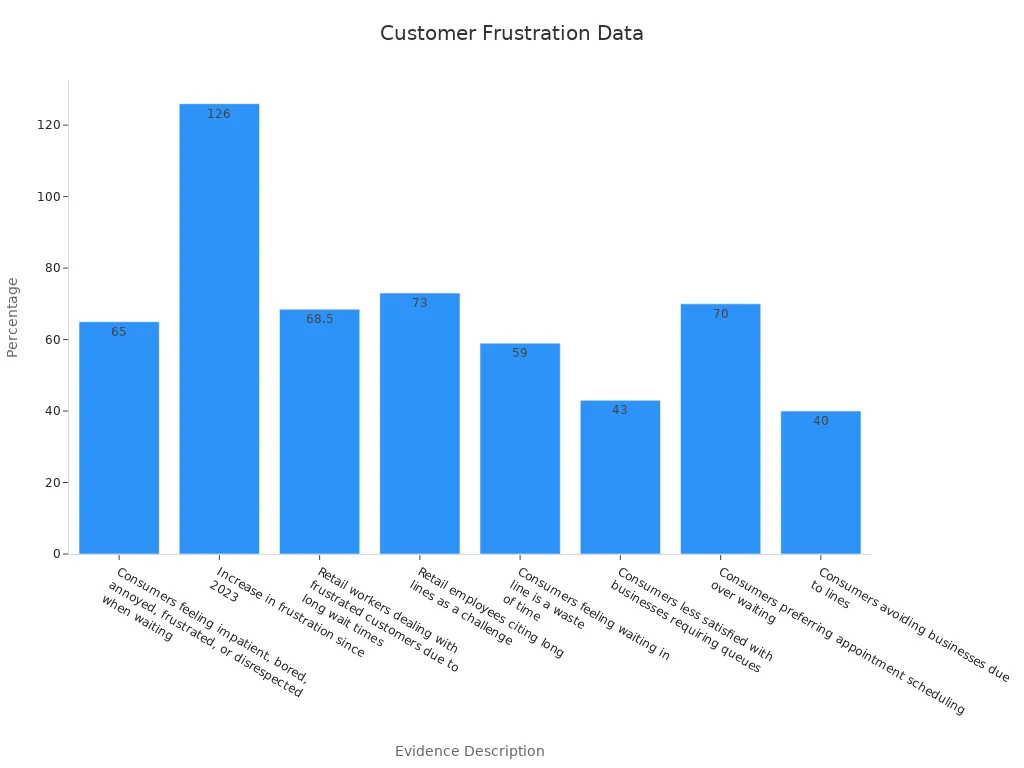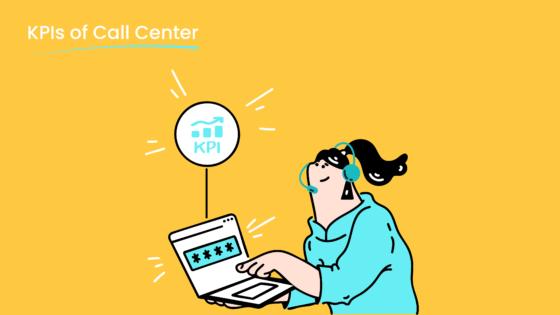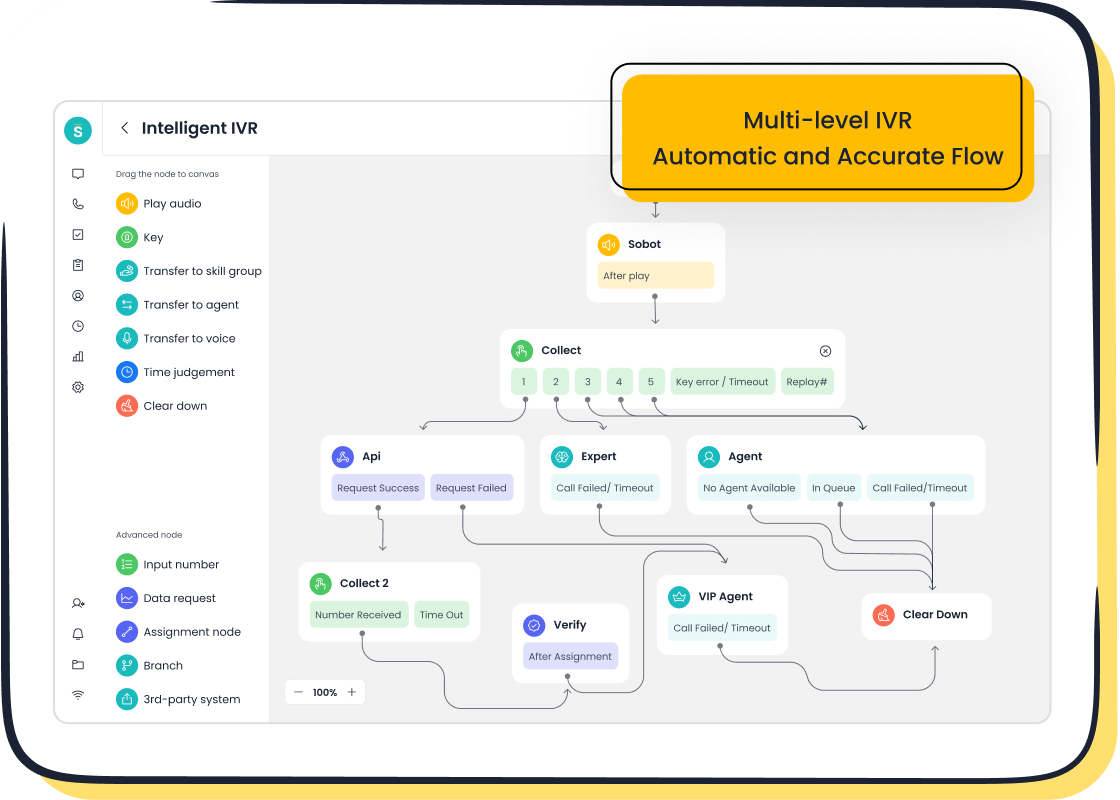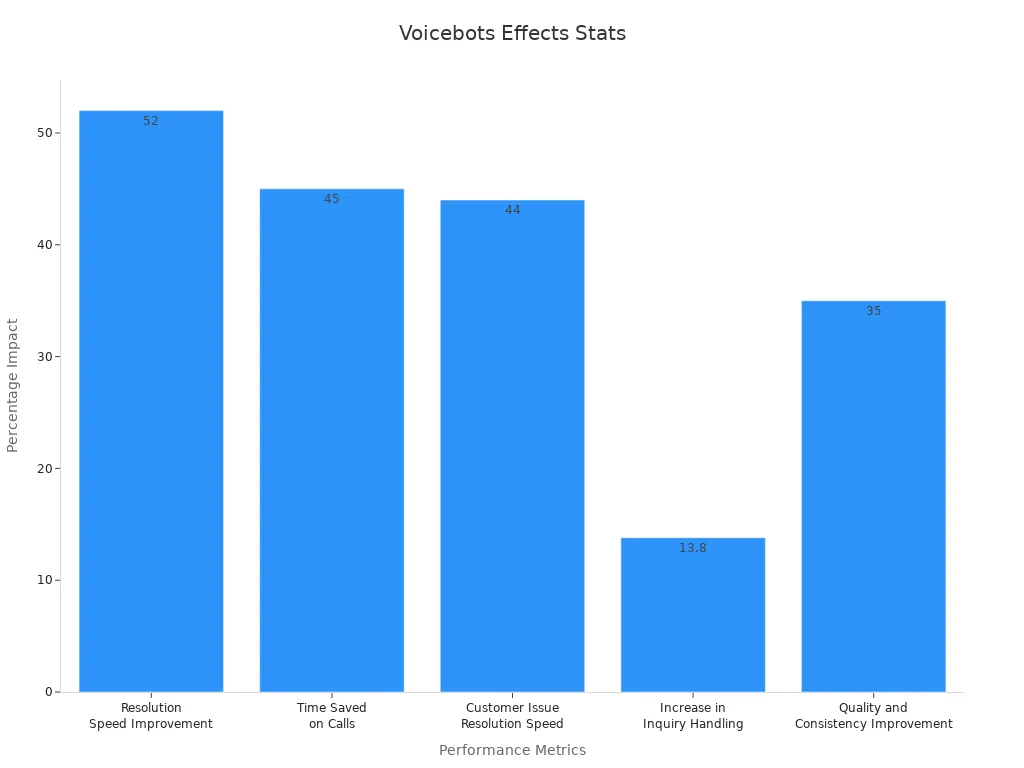Resolving Customer Complaints with Poise and Professionalism

Handling a customer complaint with professionalism and empathy can transform a negative experience into a trust-building opportunity. Many customers, about 43%, have raised their voice during service interactions, while 35% felt anger or frustration. By addressing such emotions calmly, you can enhance customer satisfaction and loyalty. Wondering how would you deal with an irate customer effectively? Leveraging tools like Sobot's solutions can streamline communication and improve outcomes.
Understanding Why Customers Become Irate
Common Causes of Customer Frustration
Customers often become irate due to a combination of factors that disrupt their expectations. Long wait times, poor communication, and unresolved issues are among the most common triggers. Research highlights that 65% of customers feel impatient, bored, or annoyed while waiting, and 43% are less satisfied with businesses that require queues. Additionally, 70% of consumers prefer appointment scheduling over waiting in line, showcasing the importance of efficient service delivery.
| Evidence Description | Percentage |
|---|---|
| Consumers feeling impatient, bored, annoyed, frustrated, or disrespected when waiting | 65% |
| Retail workers dealing with frustrated customers due to long wait times | 68.5% |
| Consumers avoiding businesses due to lines | 40% |

Understanding these pain points can help you address them proactively, ensuring a smoother customer experience.
The Role of Communication Gaps in Escalating Issues

Communication gaps often amplify frustration, turning a mildly dissatisfied customer into an irate one. Misunderstandings, unclear instructions, or the inability to reach a human agent can create a sense of neglect. Research shows that unresolved issues account for 67% of customer churn, emphasizing the need for clear and timely communication. Tools like Sobot's Voice/Call Center can bridge these gaps by offering features such as intelligent IVR and AI-powered Voicebot, ensuring customers receive prompt and accurate responses.
Tip: Always ensure your communication channels are accessible and transparent to prevent misunderstandings.
Emotional Triggers in Customer Interactions
Emotions play a significant role in customer interactions. Negative experiences, such as unresolved issues or poor service, often lead to anger and frustration. Key emotional triggers include:
- Unresolved issues, which drive 67% of customer churn.
- Inability to speak with a human, causing frustration.
- Poor customer service, strongly linked to anger and rage.
- Feelings of trust, essential for satisfaction and loyalty.
- Fear, prompting customers to seek quick resolutions.
Understanding these triggers allows you to approach irate customers with empathy and professionalism. Leveraging tools like Sobot's unified workspace can help agents manage these emotions effectively by providing a comprehensive view of customer interactions.
How Would You Deal with an Irate Customer? Core Strategies
Active Listening to Understand the Root Cause
Active listening is one of the most effective methods for handling an irate customer. By fully concentrating on what the customer is saying, you can uncover the root cause of their frustration. This approach involves maintaining focus, avoiding interruptions, and asking clarifying questions to ensure you understand their concerns. For example, if a customer complains about delayed delivery, you might ask, "Could you share more details about when you placed the order?" This not only validates their feelings but also demonstrates your commitment to resolving the issue.
Active listening builds trust and rapport, which are essential for diffusing tension. Studies show that it reduces misunderstandings and improves customer satisfaction by making customers feel heard. Tools like Sobot's unified workspace can enhance active listening by providing agents with a complete view of the customer's history, enabling them to address concerns more effectively.
Tip: Use phrases like "I understand how this could be frustrating" to acknowledge their frustration and validate their feelings.
Staying Calm and Composed Under Pressure
When dealing with an irate customer, staying calm and composed is crucial. Customers often mirror the tone and attitude of the person assisting them. If you remain calm, you can de-escalate the situation and guide the conversation toward a resolution. Research highlights that emotional regulation strategies, such as deep breathing or focusing on the task at hand, improve performance under pressure. For instance, a study on sales managers found that resilience training led to better outcomes, even in high-stress scenarios.

To stay composed, focus on the facts rather than the emotions involved. If a customer raises their voice, respond with a steady tone and reassure them that their concerns are being addressed. Sobot's AI-powered Voicebot can assist by handling initial interactions, allowing agents to step in with a clear understanding of the issue, reducing stress and improving efficiency.
Note: Practice mindfulness techniques to maintain composure during challenging interactions.
Showing Empathy and Acknowledging Emotions
Responding with empathy is a cornerstone of excellent customer service skills. When you acknowledge their frustration and validate their feelings, you show that you care about their experience. Metrics like Customer Satisfaction (CSAT) and Net Promoter Score (NPS) confirm that empathy significantly improves complaint resolution outcomes. For example, a simple statement like, "I can see how this situation has been inconvenient for you," can make a world of difference.
Empathy also involves understanding the emotional triggers behind a customer's anger. Whether it's fear of losing money or frustration over unmet expectations, addressing these emotions directly can help calm the situation. Sobot's sentiment analysis tools can identify emotional cues in real-time, enabling agents to tailor their responses and provide a more personalized experience.
Callout: Apologize sincerely for any inconvenience caused and offer solutions to rebuild trust.
Offering Clear and Practical Solutions
Once you understand the issue, provide clear and practical solutions to resolve it. Customers appreciate transparency and actionable steps. For instance, if a product is defective, explain the return process and offer a replacement or refund. Data shows that resolving complaints effectively can increase customer retention by 70%, while poor service can drive 33% of customers to switch companies.

Timely follow-ups also play a critical role. After resolving the issue, check in with the customer to ensure their satisfaction. Sobot's Voice/Call Center simplifies this process with features like call tracking and real-time monitoring, allowing agents to provide clear options and follow through efficiently.
Tip: Always outline the next steps clearly to avoid confusion and ensure the customer feels confident in the resolution process.
Practical Tips to Handle Angry Customers Professionally

Use the Customer’s Name to Build Rapport
Using a customer’s name during interactions creates a sense of familiarity and respect. It personalizes the conversation, making the customer feel valued and understood. For example, instead of saying, "We’ll look into this issue," you could say, "John, I’ll personally ensure this gets resolved for you." This small adjustment can significantly enhance trust and reduce tension.
Studies show that hearing one’s name activates specific areas of the brain associated with self-identity and positive emotions. When dealing with irate customers, this technique can help de-escalate the situation by fostering a more personal connection. Sobot’s unified workspace makes it easy for agents to access customer details, including names, ensuring seamless and personalized communication.
Tip: Use the customer’s name sparingly but meaningfully throughout the conversation to avoid sounding insincere.
Manage Expectations with Transparent Communication
Clear and honest communication is essential when handling angry customers. Mismanaged expectations often lead to frustration, so it’s crucial to set realistic timelines and provide accurate information. For instance, if a product delivery is delayed, inform the customer immediately and explain the reason. Transparency builds trust and demonstrates your commitment to resolving the issue.
A toolkit approach can help you manage these situations effectively. Use positive scripting like, "Let me find out for you," to reassure the customer that you’re actively working on a solution. Sobot’s Voice/Call Center simplifies this process with features like intelligent IVR and real-time monitoring, enabling agents to provide timely updates and maintain transparency.
Callout: Stick to promises made to customers. Failing to deliver on commitments can erode trust and escalate dissatisfaction.
Stay Solution-Oriented and Avoid Blame
When addressing a customer complaint, focus on finding a clear and effective solution rather than assigning blame. Apologizing sincerely and taking responsibility for the issue shows empathy and professionalism. As Mark Manson aptly puts it, "Take responsibility even if it wasn’t your mistake." This approach shifts the conversation from conflict to resolution.
For example, instead of saying, "This happened because of a system error," you could say, "I understand how this has inconvenienced you, and I’ll ensure it’s resolved promptly." Sobot’s AI-powered Voicebot can assist by gathering initial details, allowing agents to concentrate on delivering actionable solutions. This proactive approach not only resolves the issue but also strengthens customer trust.
Quote: "An apology demonstrates that you understand their frustration and aren’t trying to shift blame or make excuses. It’s an acknowledgment that something went wrong, and a crucial first step towards making it right."
Follow Up to Ensure Customer Satisfaction
Following up after resolving a customer complaint is a critical step in building long-term trust. It shows that you care about their experience and are committed to ensuring their satisfaction. A simple follow-up call or email can make a lasting impression. For instance, you might say, "I just wanted to check if the replacement product met your expectations."
Sobot’s call tracking and monitoring tools make follow-ups seamless. Agents can schedule reminders and access detailed interaction histories to personalize their outreach. This not only enhances customer satisfaction but also increases the likelihood of repeat business. Research indicates that resolving complaints effectively can boost customer retention by up to 70%.
Tip: Always ask for feedback during follow-ups. It provides valuable insights for improving your service and preventing similar issues in the future.
Leveraging Tools Like Sobot’s Voice/Call Center to Deal with Angry Customers

Intelligent IVR for Efficient Call Routing
An intelligent IVR (Interactive Voice Response) system can significantly improve how you handle irate customers. It ensures that calls are routed to the right agent or department, reducing wait times and frustration. Sobot’s intelligent IVR allows you to customize greetings, build menus, and route calls efficiently using a drag-and-drop interface. This feature ensures customers feel valued from the moment they connect.
Key metrics validate the efficiency of intelligent IVR systems:
- First-call resolution (FCR): Measures the percentage of issues resolved during the first interaction, reducing repeat calls.
- Average handling time (AHT): Tracks the time spent on each call, helping streamline processes.
- Customer satisfaction (CSAT): Reflects how happy customers are with the service provided.
| Metric | Description |
|---|---|
| Average Handling Time (AHT) | Measures the efficiency of call resolution, affecting customer satisfaction and staff workload. |
| First Call Resolution (FCR) | Indicates the percentage of calls resolved on the first interaction, reducing repeat contacts. |
| Customer Satisfaction Score (CSAT) | Reflects customer happiness post-call, indicating service quality and agent performance. |

By implementing Sobot’s intelligent IVR, you can enhance these metrics, ensuring smoother interactions and happier customers.
Unified Workspace for Seamless Customer Interaction
A unified workspace consolidates all customer data and communication channels into one platform. This integration allows agents to access customer histories, preferences, and previous interactions instantly. Sobot’s unified workspace empowers your team to provide personalized and efficient service, even during high-stress situations.
The benefits of a unified workspace are backed by data:
| Improvement Area | Percentage Improvement |
|---|---|
| First-contact resolution rates | 25-35% |
| Customer satisfaction | 25% |
| Agent efficiency | 30% |
| Support handling times reduction | Up to 40% |

With Sobot’s solution, you can reduce handling times and improve first-contact resolution rates, ensuring a seamless experience for your customers.
Real-Time Monitoring and Analysis for Better Insights
Real-time monitoring tools provide valuable insights into customer interactions. These tools allow you to track call performance, identify bottlenecks, and make data-driven decisions. Sobot’s Voice/Call Center offers real-time monitoring and analysis, enabling you to optimize your team’s performance and improve service quality.
For example, you can monitor metrics like call duration, resolution rates, and customer sentiment. This data helps you identify areas for improvement and train your agents more effectively. By leveraging these insights, you can ensure that your team consistently delivers exceptional service.
AI-Powered Voicebot for Enhanced Customer Support
AI-powered voicebots are revolutionizing customer support by handling repetitive queries and providing instant responses. Sobot’s AI-powered Voicebot uses advanced intent recognition to understand customer needs and offer accurate solutions. This feature allows your agents to focus on complex issues, improving overall efficiency.
Statistical findings highlight the impact of AI-powered voicebots:
| Statistic Description | Value |
|---|---|
| Resolution Speed Improvement | 52% faster ticket resolution |
| Time Saved on Calls | 45% time savings |
| Customer Issue Resolution Speed | 44% faster resolution |
| Increase in Inquiry Handling | 13.8% more inquiries per hour |
| Quality and Consistency Improvement | 35% increase in support quality and consistency |

By integrating Sobot’s AI-powered Voicebot, you can enhance resolution speed, save time, and improve the quality of your customer interactions.
Learning and Improving from Each Irate Customer Interaction
Reflecting on What Went Well and What Didn’t
Every interaction with an irate customer offers a chance to reflect and improve. By analyzing what worked and what didn’t, you can identify patterns and refine your approach. For example, did active listening help de-escalate the situation? Or did a lack of clarity in communication prolong the issue? Regularly reviewing these interactions ensures your team learns from both successes and setbacks.
Metrics play a crucial role in this process. Tracking customer satisfaction scores reveals service quality trends. High scores indicate success, while low scores highlight areas needing improvement. Additionally, customer feedback often uncovers insights that numbers alone cannot provide. Reviewing these metrics regularly keeps your team accountable and fosters continuous improvement.
Tip: Use tools like Sobot’s real-time monitoring and call tracking to analyze interactions and identify areas for growth.
Gathering Feedback from Customers and Team Members
Feedback is a powerful tool for improvement. Customers provide valuable insights into their experiences, while team members offer a frontline perspective on recurring issues. Combining these viewpoints creates a comprehensive understanding of how to prevent angry customers in the future.
| Evidence Type | Description |
|---|---|
| Customer Feedback Integration | Incorporating feedback into team goals enhances awareness of customer needs. |
| Employee Insights | Frontline employees provide actionable insights that complement survey data. |
| Experimentation | Using feedback for small-scale experiments validates assumptions effectively. |
Sobot’s unified workspace simplifies feedback collection by consolidating customer interactions and team notes in one place. This integration ensures no detail is overlooked, enabling you to make informed decisions.
Implementing Changes to Prevent Recurring Issues
The final step is turning insights into action. Addressing the root causes of complaints helps prevent angry customers from experiencing the same issues repeatedly. For instance, if delayed responses are a common complaint, implementing tools like Sobot’s intelligent IVR can streamline call routing and reduce wait times.
Continuous improvement requires a proactive approach. Regular training sessions, updated workflows, and enhanced tools ensure your team stays prepared. By acting on feedback and refining processes, you not only resolve current issues but also build a foundation for long-term customer satisfaction.
Callout: Small changes, like improving response times or clarifying policies, can significantly enhance the customer experience.
Effectively managing irate customers requires a combination of empathy, professionalism, and the right tools. Strategies like active listening, clear communication, and solution-oriented approaches build trust and loyalty. Tools such as Sobot’s AI-powered Voicebot and unified workspace enhance efficiency and personalization.
- 78% of professionals report automation improves efficiency.
- 62% say it aids in understanding customers better.
Approach complaints as opportunities to strengthen relationships and refine processes. With the right mindset and resources, you can turn challenges into growth opportunities.
FAQ
How can Sobot’s Voice/Call Center improve first-call resolution rates?
Sobot’s intelligent IVR and AI-powered Voicebot route calls efficiently, ensuring customers connect with the right agent. This reduces repeat calls and improves first-call resolution rates by up to 35%.
Tip: Use Sobot’s real-time monitoring tools to identify bottlenecks and optimize agent performance. Learn more.
What makes empathy crucial in handling irate customers?
Empathy builds trust and diffuses tension. Acknowledging emotions like frustration or fear reassures customers. Tools like Sobot’s sentiment analysis help agents tailor responses for better outcomes.
Example: Saying, “I understand how this situation has been inconvenient,” can calm an upset customer instantly.
Why is follow-up important after resolving a complaint?
Follow-ups show you care about customer satisfaction. Sobot’s call tracking tools simplify this process, helping you ensure issues are resolved and customers feel valued.
Fact: Effective follow-ups can boost customer retention by 70%.
See Also
Essential Strategies for Effective Call Center Quality Control
Ten Ways to Enhance Customer Satisfaction via Live Chat
Understanding Quality Management Systems in Call Centers
